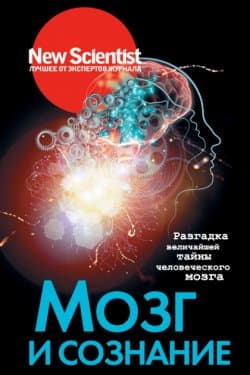Как мы ориентируемся - Маура О’Коннор (2021)
-
Год:2021
-
Название:Как мы ориентируемся
-
Автор:
-
Жанр:
-
Язык:Русский
-
Страниц:200
-
Рейтинг:
-
Ваша оценка:
Автор рассматривает вопросы, которые связаны с навыком ориентирования в пространстве у людей, животных. За счет чего животные способны мигрировать и ориентироваться с поразительной точностью? Каким образом наши предки расселились по всему миру? Маура О’Коннор задалась вопросом, что происходит, когда мы полаемся на навигацию в гаджете, предыдущим навигационным приборам? Что конкретно делает человек во время ориентирования на местности? Чем и почему мы отличается от китов, птиц, пчел? Каким образом повлияли на наше передвижение по миру и представление о своем месте в нем скорость, удобство, технологии? Материал для книги был собран из разных областей знаний и позволил открыть удивительную историю происхождения способностей человека к ориентированию.
Как мы ориентируемся - Маура О’Коннор читать онлайн бесплатно полную версию книги
–—. Technology as a Cultural Force: For Alena and Griffin // Canadian Journal of Sociology 31, № 3 (September 6, 2006). P. 351–360. https:// doi.org/10.1353/cjs.2006.0050.
Boroditsky Lera. Does Language Shape Thought? Mandarin and English Speakers’ Conceptions of Time // Cognitive Psychology 43, № 1 (August 1, 2001). P. 1–22.
–—. Metaphoric Structuring: Understanding Time through Spatial Metaphors // Cognition 75, № 1 (April 14, 2000). P. 1–28. )00073–6.
Boudette Neal E. Building a Road Map for the Self-Driving Car // New York Times, March 2, 2017, sec. Automobiles.
Bower Gordon H. Analysis of a Mnemonic Device: Modern Psychology Uncovers the Powerful Components of an Ancient System for Improving Memory // American Scientist 58, № 5 (1970). P. 496–510.
Brachmayer Scott. Kajutaijuq. Film short, 2015.
Bradley C. E. Traveling with Fred George: The Changing Ways of Yup’ik Star Navigation in Akiachak Western Alaska // In The Earth Is Faster Now: Indigenous Observations of Arctic Environmental Change: Frontiers in Polar Social Science, edited by Igor Krupnik and Dyanna Jolly. 240–265. Fairbanks: Arctic Research Consortium of the United States, 2002.
Briggs Jean L. Inuit Morality Play: The Emotional Education of a Three-Year- Old. New Haven, CT: Yale University Press, 1998.
Brown Frank A., J. Woodland Hastings, and John D. Palmer. The Biological Clock: Two Views. Cambridge: Academic Press, 2014.
Brownell Ginanne. Looking Forward, Fiji Turns to Its Canoeing Past // New York Times, February 3, 2012, sec. Global Business.
Buchanan Brett. Onto-Ethologies: The Animal Environments of Uexküll, Heidegger, Merleau-Ponty, and Deleuze. Albany: State University of New York Press, 2009.
Bullens Jessie, Kinga Iglói, Alain Berthoz, Albert Postma, and Laure Rondi-Reig. Developmental Time Course of the Acquisition of Sequential Egocentric and Allocentric Navigation Strategies // Journal of Experimental Child Psychology 107, № 3 (November 1, 2010). P. 337–350. jecp.2010.05.010.
Burda Hynek, Sabine Begall, Jaroslav Červený, Julia Neef, and Pavel Němec. Extremely Low-Frequency Electromagnetic Fields Disrupt Magnetic Alignment of Ruminants // Proceedings of the National Academy of Sciences 106, № 14 (April 7, 2009). P. 5708–5713.
Burgess Neil. Spatial Memory: How Egocentric and Allocentric Combine // Trends in Cognitive Sciences 10, № 12 (December 1, 2006). P. 551–557.
Burgess Neil, Eleanor A. Maguire, and John O’Keefe. The Human Hippocampus and Spatial and Episodic Memory // Neuron 35, № 4 (2002). P. 625–641.
Burgess Neil, Hugo J. Spiers, and Eleni Paleologou. Orientational Manoeuvres in the Dark: Dissociating Allocentric and Egocentric Influences on Spatial Memory // Cognition 94, № 2 (December 2004). P. 149–166.
Burke Ariane. Spatial Abilities, Cognition and the Pattern of Neanderthal and Modern Human Dispersals // In The Neanderthal Home: Spatial and Social Behaviours // Special issue, Quaternary International 247, № Supplement C (January 9, 2012). P. 230–235.
Burke Ariane, Anne Kandler, and David Good. Women Who Know Their Place // Human Nature 23, № 2 (June 1, 2012). P. 133–148.

 Человек среди людей
Человек среди людей  Разум убийцы
Разум убийцы  Аскетизм 2
Аскетизм 2  Страх
Страх  Мозг и сознание
Мозг и сознание  Среда обитания: Как архитектура влияет на наше поведение и самочувствие
Среда обитания: Как архитектура влияет на наше поведение и самочувствие  Пир теней
Пир теней  Князь во все времена
Князь во все времена  Когда порвется нить
Когда порвется нить  Пока я здесь
Пока я здесь 



